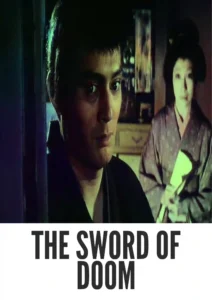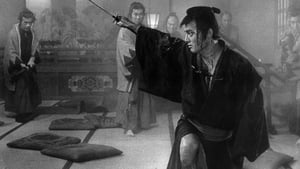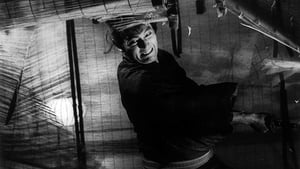Contact: [email protected]
Video Sources 0 Views

Synopsis
The Sword of Doom 1966: A Tale of Honor, Betrayal, and Redemption

Introduction
In the realm of samurai cinema, “The Sword of Doom 1966” stands as a towering achievement of storytelling and visual poetry. Directed by the legendary filmmaker Kihachi Okamoto, this timeless masterpiece captures the essence of bushido—the way of the warrior—with breathtaking intensity and authenticity. As we embark on a journey through the blood-stained world of feudal Japan, we uncover the significance of its early colored films version and its enduring legacy in the pantheon of cinematic greatness.
Check The Full Colorized Movies List
Check Our Colorized Movies Trailer Channel
The Artistry of “The Sword of Doom”
Okamoto’s Visionary Direction
At the helm of “The Sword of Doom” is the visionary Japanese director Kihachi Okamoto, whose bold and uncompromising approach to filmmaking has earned him a place among the greatest auteurs of all time. With its stunning cinematography, visceral action sequences, and profound thematic depth, the film transports viewers to the heart of feudal Japan with breathtaking clarity and intensity. Okamoto’s mastery of the cinematic medium is on full display, as he weaves together a tale of honor, betrayal, and redemption that lingers long after the credits roll.
Riveting Performances
Central to the film’s impact are the riveting performances of its ensemble cast, led by Tatsuya Nakadai in the role of the enigmatic swordsman Ryunosuke Tsukue. Nakadai’s portrayal of the brooding and morally ambiguous protagonist is a tour de force of emotional depth and physical prowess, capturing the inner turmoil and existential angst of a man consumed by his own demons. Supported by a talented cast of actors, Nakadai brings depth, nuance, and humanity to his portrayal, imbuing the character of Ryunosuke with a timeless resonance that transcends cultural boundaries.
Revisiting the Storytelling Mastery: Plot and Themes
A Dark Tale of Honor and Betrayal
“The Sword of Doom” unfolds as a dark and gripping tale of honor and betrayal, following Ryunosuke Tsukue, a skilled swordsman whose thirst for power and prestige leads him down a path of violence and destruction. As Ryunosuke navigates the treacherous world of feudal Japan, he encounters a cast of characters whose fates are intertwined with his own, including his loyal wife, his ruthless enemies, and the wandering samurai seeking to bring him to justice. Through its richly textured storytelling and profound thematic depth, “The Sword of Doom” explores the timeless themes of duty, loyalty, and the consequences of one’s actions.
Themes of Redemption and Consequence
At the heart of “The Sword of Doom” are its themes of redemption and consequence, which resonate throughout the film with profound emotional resonance. As Ryunosuke grapples with the moral implications of his actions, he is forced to confront the consequences of his choices and the toll they have taken on his soul. Through his journey of self-discovery and redemption, Okamoto invites viewers to contemplate the nature of honor, righteousness, and the human capacity for transformation in the face of adversity.
The Dynamic Relationship Between Swordsmanship and Morality
The Code of Bushido
” The Sword of Doom” serves as a meditation on the code of bushido—the way of the warrior—and its implications for those who wield the sword. As Ryunosuke navigates the complexities of honor, duty, and loyalty, he is forced to confront the ethical dilemmas and moral ambiguities inherent in the samurai code, leading him to question the very foundations of his identity and existence.
The Sword as a Symbol of Power and Destruction
At the heart of “The Sword of Doom” lies the sword itself—an object of immense power and destruction that serves as both a weapon of war and a symbol of honor and prestige. As Ryunosuke wields his blade with deadly precision and ruthless efficiency, he becomes a force of nature, leaving a trail of destruction in his wake. Through his mastery of the sword, Okamoto explores the duality of violence and virtue, inviting viewers to contemplate the ethical implications of wielding such power in the pursuit of glory and honor.
A Visual and Technical Achievement
Cinematic Grandeur
Shot in luminous black-and-white, “The Sword of Doom” is a visual feast that transports viewers to the heart of feudal Japan with breathtaking beauty and precision. From its stunning landscapes to its meticulously choreographed action sequences, every frame is a work of art, meticulously composed and imbued with symbolic meaning. Okamoto’s use of light, shadow, and composition creates a mesmerizing and immersive experience that captures the essence of bushido with unparalleled authenticity and intensity.
Early Colored Films Version
In a departure from convention, the filmmakers behind “The Sword of Doom” experimented with an early colored films version of the movie, offering audiences a new perspective on its timeless tale. This innovative approach to colorization adds depth and nuance to the film’s visuals, enriching its already mesmerizing aesthetic and enhancing the overall viewing experience.
Behind the Scenes of “The Sword of Doom”
Okamoto’s Artistic Process
Behind the camera, Kihachi Okamoto and his team worked tirelessly to bring “The Sword of Doom” to life with authenticity and integrity. From the elaborate set designs to the evocative cinematography and haunting score, every aspect of the production was crafted with meticulous care and attention to detail. Okamoto’s uncompromising commitment to his artistic vision shines through in every frame, as he pushes the boundaries of cinematic expression to create a work of unparalleled beauty and emotional resonance.
Collaborative Creativity
One of the most remarkable aspects of “The Sword of Doom” is the collaborative spirit that infused every aspect of its creation. From the dedicated performances of the cast to the innovative contributions of the production crew, each member of the team played a vital role in bringing Okamoto’s vision to life. Through their collective efforts, they created a cinematic masterpiece that continues to inspire and captivate audiences around the world.
Legacy and Influence on Cinema
Critical Acclaim and Cultural Impact
Upon its release, “The Sword of Doom” received widespread critical acclaim, with particular praise for its stunning visuals, riveting performances, and profound thematic depth. Over the years, the film has attained legendary status among cinephiles and scholars alike, inspiring countless filmmakers to explore the complexities of honor, betrayal, and redemption with honesty and authenticity.
Inspiring Future Generations
“The Sword of Doom” has left an indelible mark on the world of cinema, inspiring filmmakers and audiences alike to contemplate the timeless themes of honor, morality, and the human condition. Its enduring legacy serves as a testament to the enduring power of cinema to capture the essence of a bygone era and provoke thought, reflection, and introspection.
Where to Watch “The Sword of Doom 1966 Full Movie”?
For those eager to experience the epic grandeur of “The Sword of Doom” in its entirety, the film is readily available on various streaming platforms and home video releases. Whether you’re a seasoned samurai cinema enthusiast or a newcomer to the world of Japanese filmmaking, “The Sword of Doom” promises a journey unlike any other—a journey into the heart of honor, betrayal, and redemption.
In Conclusion
“The Sword of Doom 1966” stands as a timeless testament to the power of cinema to capture the beauty and brutality of the human experience. With its stunning visuals, riveting performances, and profound thematic depth, the film continues to resonate with audiences around the world, inviting them to contemplate the nature of honor, morality, and the human condition with courage, compassion, and understanding. As we revisit this cinematic masterpiece, let us embrace its invitation to explore the depths of the samurai spirit and the enduring quest for honor, redemption, and enlightenment.














